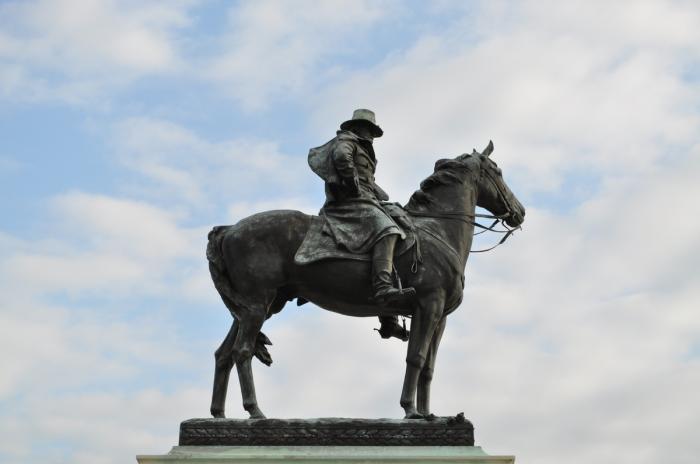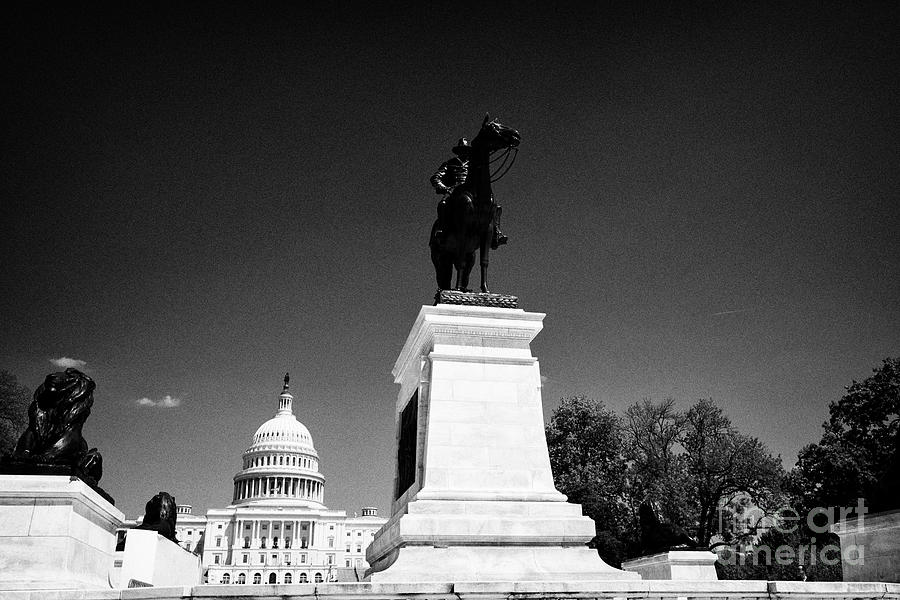

And yet, there are almost no lions to be found in the sketches, letters, or in the reminisces of his son in remembering his father’s life's work. He wrote letters to secure loans of uniforms and dissected horses to gain a thorough understanding of their motion.

He spent four years in the US Army Reserves learning every detail of artillery.
#Ulysses s grant memorial full
His personal papers are full of sketches of men and horses marching and engaged in struggle. He labored over the battle scenes and carefully studied horses in action and mock battle drills. Shrady would spend over 20 years completing the monument and would die only a few days before the dedication with many obituaries claiming the worry and toil over the monument had killed him. There were also repeated charges of favoritism since Shrady’s father had been a personal physician of Grants’ in his final battle with cancer and the family of Shrady's wife was wealthy and well connected. His critics claimed he had bought the competition by proposing a design that would cost more than was budgeted, and promising to make up any overage out of his own pocket. When he was awarded the commission in 1902, his youth and inexperience made the award very controversial. Sculptor Henry Merwin Shrady was an up-and-coming, but mostly self-taught, artist with far less experience than those who championed the 34 rival proposals for the monument. The sculpture was designed by the firm of Shrady and Casey and cast by the Roman Bronze Works in White Plains, New York. To an artist perhaps the proud attitude of the crouching figures might convey an air of heroic protection, but to the ordinary mind this same proud appearance might mean haughty possession, and it is this latter impression, probably, which has caused the inquiries raised.” However, despite the conjecture of the Post and tourists, the Grant Memorial lions (Which look nothing like the Trafalgar Square lions), owe their distinctive lion-ness and their unusual appeal to a zoo in New York and the experience of, and pressures on, the artist who created them. In 1916 the Washington Post reported, “The fact that the lions are copies of the British lions on the Trafalgar Square monument in England and the sight of the flag stretched under their bodies have caused many tourists and other observers to wonder just what the motif of the group is intended to express. And yet there is about them a suggestion of superleonine strength and majesty.” In his book, “From Christ to Coke.” Martin Kemp describes them as having a “snooty air of invincible superiority reminiscent of the bronze lions that populate Paris.” The lions briefly courted controversy when they were compared to the lions of Trafalgar Square. They are like no lions that ever came out of Africa. In its final report on the monument the Fine Arts Commission said, “The sculptor’s only departure from realism is found in the four bronze lions, frankly decorative, that guard the base of the pedestal.

The lions have not been given much attention or appreciation. But for the most part, they seem like an architectural afterthought as they wait patiently with a guarding paw on flags of the US Army and the United States. I especially like the lion on the south-east corner of the memorial which seems to be pondering the need to head up the Hill and institute some kind of lionish political reform.

The narrowed muzzle and layered framing of the face by the mane lend a sleekness that contrasts with the hoary visage of many other lions. To me they represent a lion-ness that I have not seen in any other sculpture. In the context of the memorial, they are understated, having been separated from the statue of Grant and dwarfed in size by the battle scenes. There are four recumbent lions on four separate pedestals that surround the larger statue of President Grant. They have always stood out as my favorite feature of the sprawling memorial though the intricate and extensive battle scenes that sit to either side of them, and the towering statue of Grant on horseback get more attention. I have walked by these great cats, rendered in blue-green bronze, nearly every day for over a decade and they have become old friends that greet me warmly each morning. They had made an impression on me, long before they gained prominence in the opening credits of “House of Cards” on Netflix. Grant Memorial were the inspiration for this site.


 0 kommentar(er)
0 kommentar(er)
